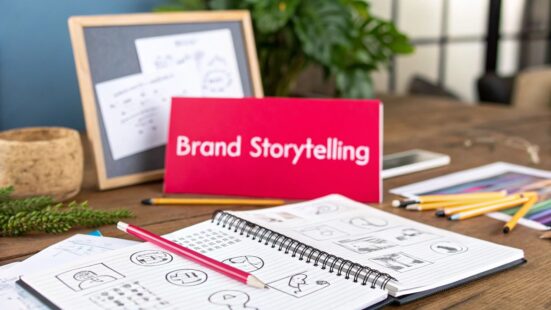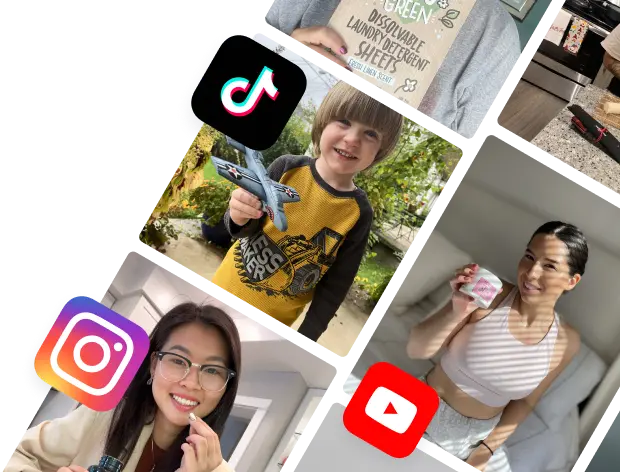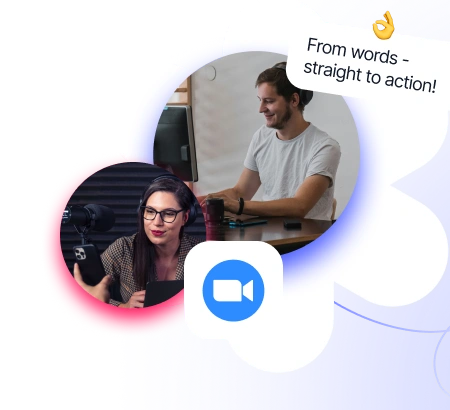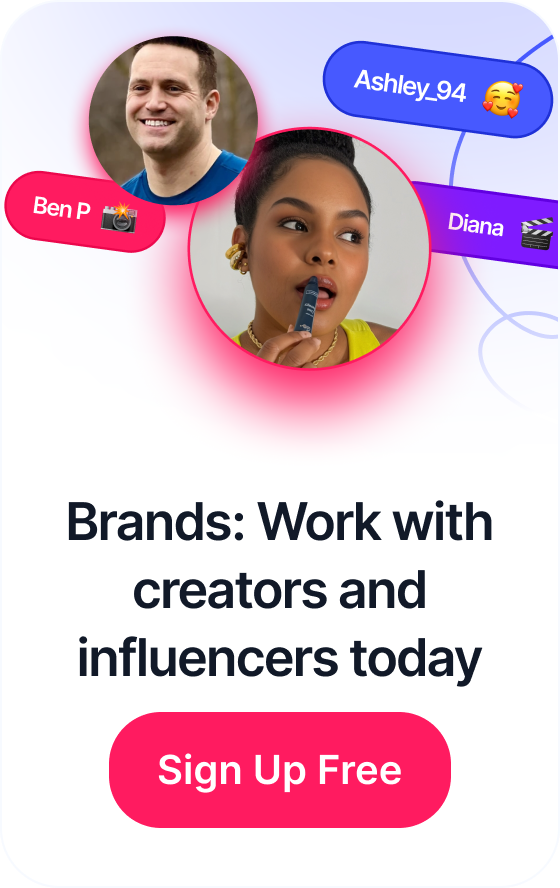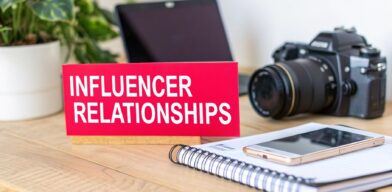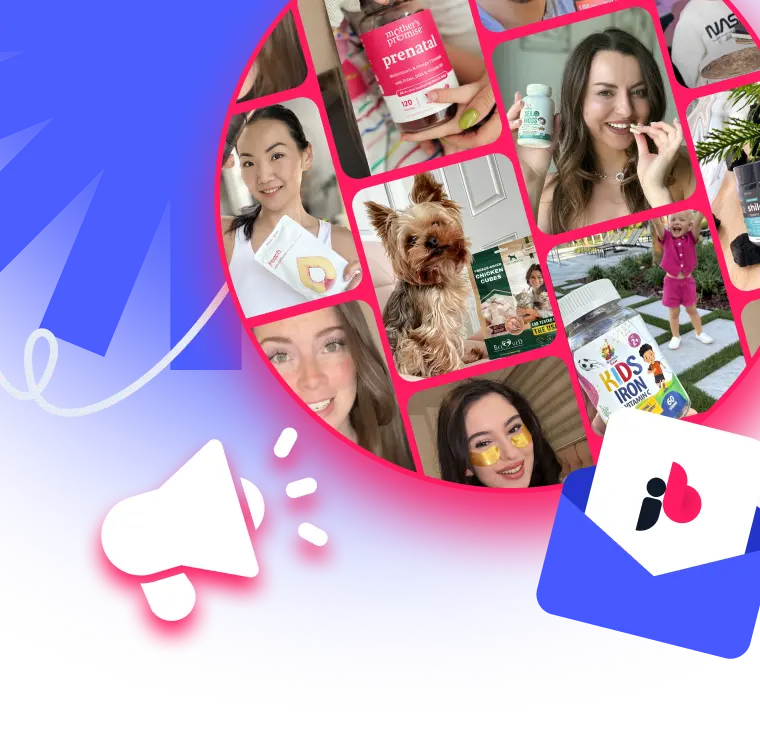 Mastering the Engagement Rate Calculator
Mastering the Engagement Rate Calculator
Let's be honest, nobody likes being sold to. We tune out aggressive sales pitches and endless feature lists almost instantly. But a good story? A good story pulls you in.
Brand storytelling is the art of wrapping your business in a narrative that connects with people on a human level. It's about building an emotional connection that lasts long after the credit card is put away.
Table of Contents
Beyond The Buzzword What Is Brand Storytelling
Think about the last time a story really got to you. It probably had characters you could root for, a struggle you understood, and an ending that left you feeling something. Brand storytelling takes those same core ingredients and applies them to your business, turning your marketing from a one-way broadcast into a conversation people actually want to join.
At its heart, it’s about shifting the focus from what you sell to why you sell it. It’s the human story behind the logo—the late nights, the breakthrough moments, and the core purpose that fuels everything you do. This isn't just about informing customers; it's about inviting them to be part of your journey. When you share what you stand for, you give people something to believe in, not just something to buy.
Why Stories Resonate More Than Statistics
We're wired for stories, not spreadsheets. While data is important for business, it doesn't build loyalty. A story provides context, sparks emotion, and makes your brand stick in someone's mind, which is a huge advantage in a noisy market.
The proof is in how people respond. Consumers are actively looking for more authentic connections with the brands they support.
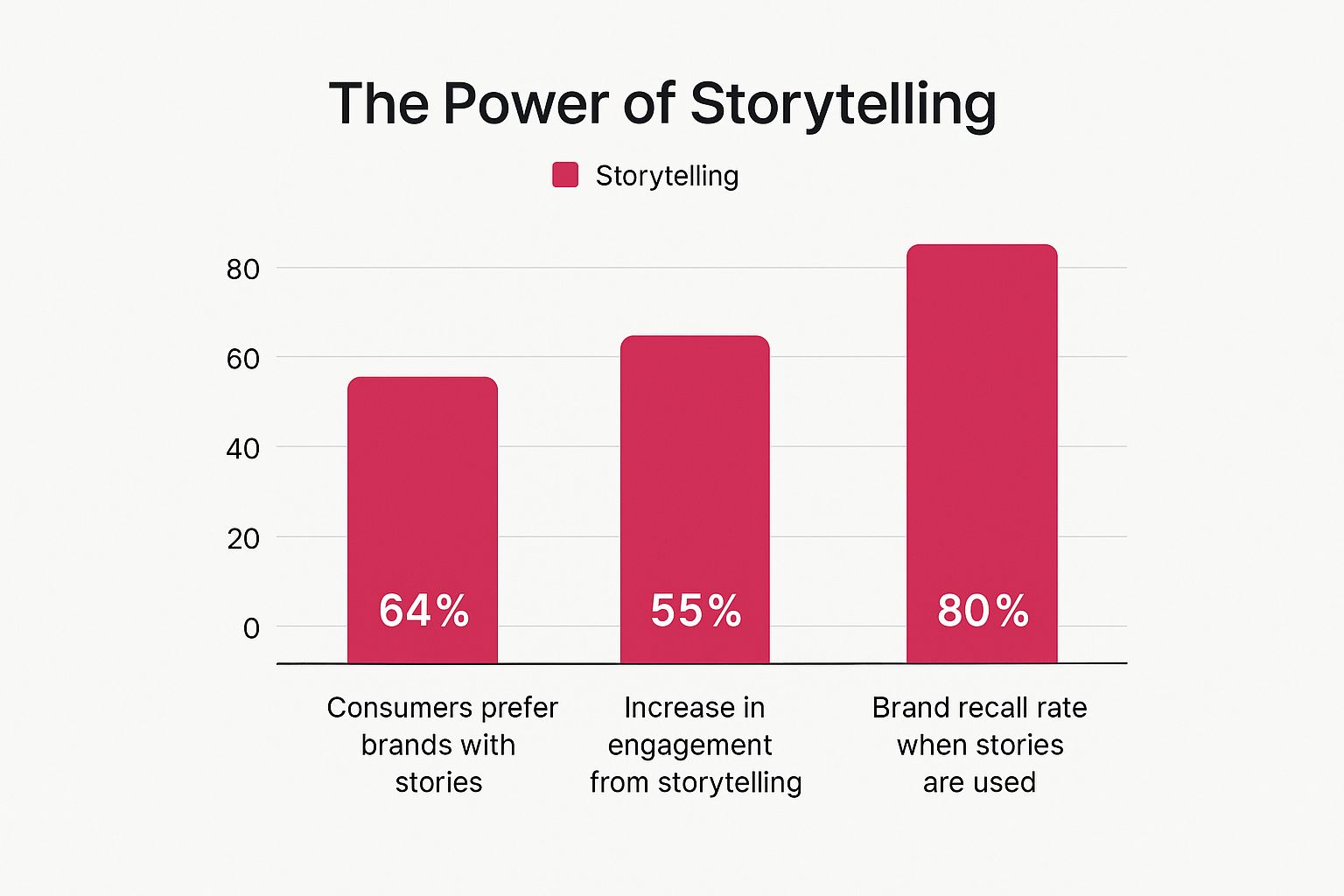
The data is pretty clear: weaving a story into your marketing isn't just a creative flourish—it’s a powerful business strategy. In fact, storytelling can boost conversion rates by as much as 30%, and a whopping 92% of consumers say they want ads that feel more like a story.
A great brand story doesn't just sell a product; it sells a feeling, a purpose, and a piece of itself. It’s the difference between a customer buying from you once and becoming a lifelong advocate.
This narrative becomes a core piece of your brand identity, so consistency is everything. To make sure your story comes across clearly everywhere—from your website to your social media—it helps to have a solid foundation. Understanding how to create brand guidelines is a crucial first step in keeping your message cohesive and powerful across all channels.
Traditional Marketing vs Brand Storytelling
So, how different is this approach from the ads we're all used to seeing? The shift is fundamental. Traditional marketing talks at customers, while brand storytelling talks with them.
Here's a quick breakdown of the key differences:
| Aspect | Traditional Marketing | Brand Storytelling |
|---|---|---|
| Primary Goal | Drive immediate sales | Build long-term loyalty and trust |
| Approach | Interruptive (ads, pop-ups) | Engaging (content, narrative) |
| Focus | Product features and price | Brand values, mission, and purpose |
| Tone | Transactional and persuasive | Authentic and emotional |
| Customer Role | Passive consumer | Active participant and advocate |
| Measurement | Sales metrics, ROI | Engagement, brand sentiment, community growth |
Ultimately, traditional marketing aims for a transaction, while brand storytelling strives for a relationship. One creates a customer for a day; the other cultivates a fan for life.
The Unforgettable Elements of a Great Brand Story

Think about any story that's ever stuck with you—a movie, a book, even just a great anecdote from a friend. They all share a similar DNA. Brand storytelling is no different. It follows a classic narrative arc, but with one critical, non-negotiable rule: your brand is never the hero.
The real secret sauce is making your customer the hero of the story. They’re the ones facing a challenge, chasing a goal, and looking for a way to win. This simple flip in perspective is the absolute foundation for building a narrative that creates genuine trust and connection. Your brand’s job? You’re the wise guide who shows up to equip the hero with the tools they need to save the day.
Your Customer Is the Hero
Every great story needs a protagonist, someone the audience can really get behind. In your brand’s world, that’s always your customer. They have hopes and dreams, but they also have real obstacles standing in their way. They're on a quest for a solution.
Your job is to get inside their head. What do they really want? What’s keeping them up at night? When you build your story around their journey, it becomes instantly relatable and powerful. This one change transforms your marketing from a monologue about how great you are into a dialogue about their success.
Your Brand Is the Guide
Once you've placed your customer in the spotlight, your brand's role becomes crystal clear. You are the seasoned guide who appears at a critical moment to help them navigate their conflict. Think of your brand as the Yoda to their Luke Skywalker or the Gandalf to their Frodo.
You provide the plan, the tool, or the insight that empowers them. This mentor-hero dynamic is incredibly effective because it’s not about your brand’s ego; it’s about unlocking your customer's potential. It’s the difference between being helpful and just being boastful.
A brand that positions itself as the hero talks at its audience. A brand that positions itself as the guide walks alongside them, building a relationship based on support and shared success.
The Core Elements of the Story Arc
To bring this hero-guide dynamic to life, your story needs to follow a proven structure. Each stage is designed to move your customer forward on their journey.
- The Conflict: This is the problem your customer is up against. It’s the source of all the tension and the entire reason they’re looking for a solution in the first place.
- The Journey: This is where we see the hero struggling. They've tried to solve the problem on their own, probably without much luck, which only adds to their frustration.
- The Discovery: And then, they find you. Your brand—the guide—appears, offering a new plan and a better way forward. This is the moment you introduce your product or service.
- The Resolution: Armed with your help, the hero finally overcomes their conflict and achieves their goal. The result is a successful transformation, a true win.
This structure is a simple yet incredibly effective blueprint for any story you want to tell. To see how these elements come together visually, it’s worth checking out examples of Storytelling in Video: Proven Techniques to Captivate Audiences, which really breaks down how to apply them.
How Great Storytelling Drives Real Business Growth
It’s easy to think of storytelling as a "soft" marketing skill, but in reality, it's one of the sharpest tools you have for driving hard results. A great brand story isn't just about crafting a compelling narrative; it's a direct driver of your bottom line. It delivers tangible business benefits that go way beyond surface-level metrics, creating fierce brand loyalty and boosting your conversion rates.
When you tell the right story, you trigger a powerful psychological response in your audience. This builds an emotional bond that turns casual shoppers into lifelong fans—and that’s where profitable, long-term relationships are born. This isn’t just theory; the data backs it up. Effective storytelling changes how people perceive your brand’s value, which is everything in a crowded market.
Building Emotional Equity with Your Audience
Stories have a way of forging connections that traditional advertising just can’t touch. When a customer feels seen and understood by your brand’s narrative, they shift from being a one-time buyer to a loyal advocate. Think of it as building "emotional equity"—a powerful asset that pays dividends over time.
This connection translates directly into measurable action. On average, brands that commit to consistent, authentic storytelling see a 20% increase in brand value. As you build this connection, you'll want to keep an eye on the numbers that matter. You can get a better handle on what to track by exploring effective brand awareness KPIs that show the true impact of your narrative efforts.
By focusing on the human side of your business, your brand story becomes a bridge, connecting your company's purpose to your customer's personal values. This alignment is where true loyalty is born.
Turning Connection into Conversions
A compelling story doesn't just make people feel good; it guides them toward making a purchase. By framing your product as the solution to your customer's problem (the "hero's conflict," if you will), your narrative gives them the context and confidence they need to click "buy." Suddenly, it’s not just a transaction—it’s a meaningful step in their own journey.
The financial impact here is huge. A staggering 75% of businesses are now investing more in their brand strategies than in infrastructure, proving just how central storytelling has become. What's more, about 60% of digital marketing budgets are now dedicated to digital branding, all focused on building narratives that convert. The trend is crystal clear: companies know that a great story sells. You can discover more insights about branding statistics on linearity.io if you want to dig deeper into the data.
A well-told story provides the "why" behind the "what," giving customers a reason to choose you over a competitor, even if your features are nearly identical. This is how you build a sustainable engine for growth, creating brand equity that pays off for years to come.
Learning from Brands That Master Storytelling

Theory is great, but seeing brand storytelling in the wild is where the real learning happens. The best brands don’t just move products off shelves; they pull you into a world they've built, a narrative you can see yourself in.
They've figured out the secret: make the customer the hero. This creates an emotional hook that turns casual buyers into loyal fans. Let's break down how a few masters of the craft do it, so you can borrow from their playbook.
Nike: Finding Greatness in Everyone
Nike’s strategy is a masterclass in casting the customer as the undisputed protagonist. Their story is never really about air-sole technology or Dri-FIT fabric. It’s always about the person pushing their limits, whether that's an Olympian or someone just trying to get through their first 5K.
Their core message is powerful and simple: greatness is within everyone. Nike isn't the hero; they're the wise guide, the one who provides the gear and the motivation to help you on your own quest. They never say, “Our shoes will make you great.” Instead, the message is, “You already are great. Our gear will help you prove it.”
This narrative is woven into everything they do, from their iconic TV spots to the content inside their training apps. By zeroing in on the customer’s internal struggle and eventual triumph, Nike ends up selling an identity, not just sneakers and apparel.
Dove: Championing Real Beauty
For decades, the beauty industry pushed a very singular, often unattainable, story. Dove decided to flip the script. They tapped into a huge conflict: millions of women felt left out and discouraged by the unrealistic standards they saw in the media every day.
Dove’s story made these women the heroes. It challenged the old narrative and started a conversation that celebrated all forms of beauty. Their message was all about empowerment and authenticity, which elevated the brand from a simple soap company to a global champion for self-esteem.
Dove’s success proves that a brand story can be a powerful force for cultural change. By aligning with a meaningful social cause, they built a deep, emotional bond with their audience that competitors couldn't replicate with product features alone.
Their campaigns featured real women, not models, and shared their authentic stories through short films and community workshops. This masterstroke turned a functional product into a symbol for a much larger movement, building a fiercely loyal following around a set of shared values.
A Breakdown of Storytelling Strategies
When you look closely at these brands, you start to see the patterns. Their specific messages and channels are different, but the core structure is remarkably consistent. They truly understand what brand storytelling is all about: creating a narrative where the customer is the one who wins in the end.
To really see how these principles work in practice, let's look at a few case studies. The table below breaks down how different brands apply these core storytelling elements to connect with their audience and achieve their goals.
Brand Storytelling Case Study Analysis
| Brand | Core Message | Primary Channel | Key Takeaway |
|---|---|---|---|
| Nike | Everyone has the potential for greatness. | High-impact video ads, digital content. | Focus on the customer’s journey and transformation. |
| Dove | Real beauty is authentic and diverse. | User-generated stories, social campaigns. | Align your brand with a powerful social mission. |
These examples make it clear that a powerful brand story isn't just a marketing gimmick. It's a core strategic asset that forges lasting connections and fuels real business growth.
A Practical Guide to Building Your Brand Story
Crafting a brand story that actually connects with people isn't about some magical burst of creativity. It’s more like building something from the ground up—a strategic process of figuring out your purpose and matching it with what your audience genuinely cares about. This guide will walk you through that process, step by step, turning those big ideas into a real story that sticks.
Think of your story as the foundation for all your marketing. It’s the "why" that breathes life into the "what" you sell and the "how" you sell it. Let's get to building.
Start with Your Why
Before you can tell your story, you need to know what it’s actually about. This means digging deeper than just "making a profit." Why does your company even exist? What specific problem or frustration sparked the idea for your brand in the first place? This is the soul of your narrative.
A huge first step here is crafting a powerful brand mission statement. This isn't just a corporate platitude to hang on the wall; it’s your North Star. It guides every email, every social post, and every ad you create, making sure your story stays consistent and true to who you are.
Once that core mission is locked in, everything else gets easier. Your "why" shapes your message, your tone, and the personality your brand shows the world.
Identify Your Audience and Their Conflict
Like we’ve covered, the golden rule of brand storytelling is simple: your customer is the hero. Not you. This means you have to know them inside and out. Forget basic demographics for a minute and get into their heads. What are their real-world struggles, their biggest dreams, and their nagging pain points?
Create detailed customer personas to make your audience feel real. What keeps them up at night? What are they desperately trying to achieve? Your story only becomes compelling when it plugs directly into the central conflict of your hero's life.
A brand story that doesn't solve a problem for its hero is just noise. The most resonant narratives position the brand as the essential guide that helps the customer overcome a specific, relatable obstacle.
Your job is to find that tension. Is your customer battling a lack of time? Are they frustrated with poor-quality products? Or maybe they're searching for a more sustainable way to live? This conflict is the engine that will drive your entire story forward.
Define Your Brand Personality
Okay, so you have your purpose and you know your hero. Now it's time to figure out how you're going to tell this story. Your brand personality is the unique voice and character that gives your narrative its flavor. Are you the witty sidekick, the wise mentor, the bold innovator, or the comforting friend?
This personality has to feel authentic to your brand’s values while also clicking with your target audience. It’s the difference between copy that sounds like a textbook and copy that sounds like a conversation. It shows up everywhere—from your website to your social media captions and even your packaging.
Think about these key traits:
- Tone of Voice: Are you professional and buttoned-up, or are you casual and cracking jokes?
- Visual Style: Do your visuals pop with bold, energetic colors, or do they soothe with a minimalist, clean look?
- Core Values: What do you stand for? Innovation, tradition, sustainability, community?
Choosing a distinct personality is how you cut through the noise. It makes your brand more human, more memorable. It ensures that when your hero is looking for a guide, you're the first one they think of. This consistent character is what turns a business into a brand people actually love.
How AI and Data Are Shaping Brand Narratives
Technology isn't just a megaphone for your message anymore; it’s becoming a core part of the creative process itself. More specifically, artificial intelligence and data analytics are completely changing how brands build and share their stories, shifting the game from broad, one-size-fits-all messages to deeply personal conversations.
But let's be clear: the goal here isn’t to replace human creativity. It’s to supercharge it. AI can sift through massive piles of audience data to find hidden patterns, helping you figure out what your customers really care about. This opens the door to creating hyper-personalized stories that hit home on an individual level, making every customer feel like the hero of a narrative built just for them.
The Rise of Data-Driven Narratives
Instead of throwing ideas at the wall and hoping something sticks, brands can now use data to see what’s working and what isn’t in real-time. This is where data storytelling comes into play—it's the art of turning complex analytics into compelling, easy-to-digest narratives.
And this isn't some niche trend. Interest in this approach is exploding. Searches for "storytelling marketing" have shot up by 300% since 2018, and Gartner even predicts that by 2025, data storytelling will be the main way we consume analytics. This shift gives brands the power to make complex insights feel personal and actionable. For a deeper look at the numbers, you can explore more marketing statistics on higocreative.com.
By leaning on data, brands can make sure their stories don't just connect emotionally but are also strategically sound, proving their impact with cold, hard metrics.
Of course, understanding whether these tech-infused stories are actually successful is crucial. To get a better handle on measuring the impact of your narrative efforts, check out our guide on content marketing attribution.
Got Questions About Brand Storytelling? We've Got Answers.
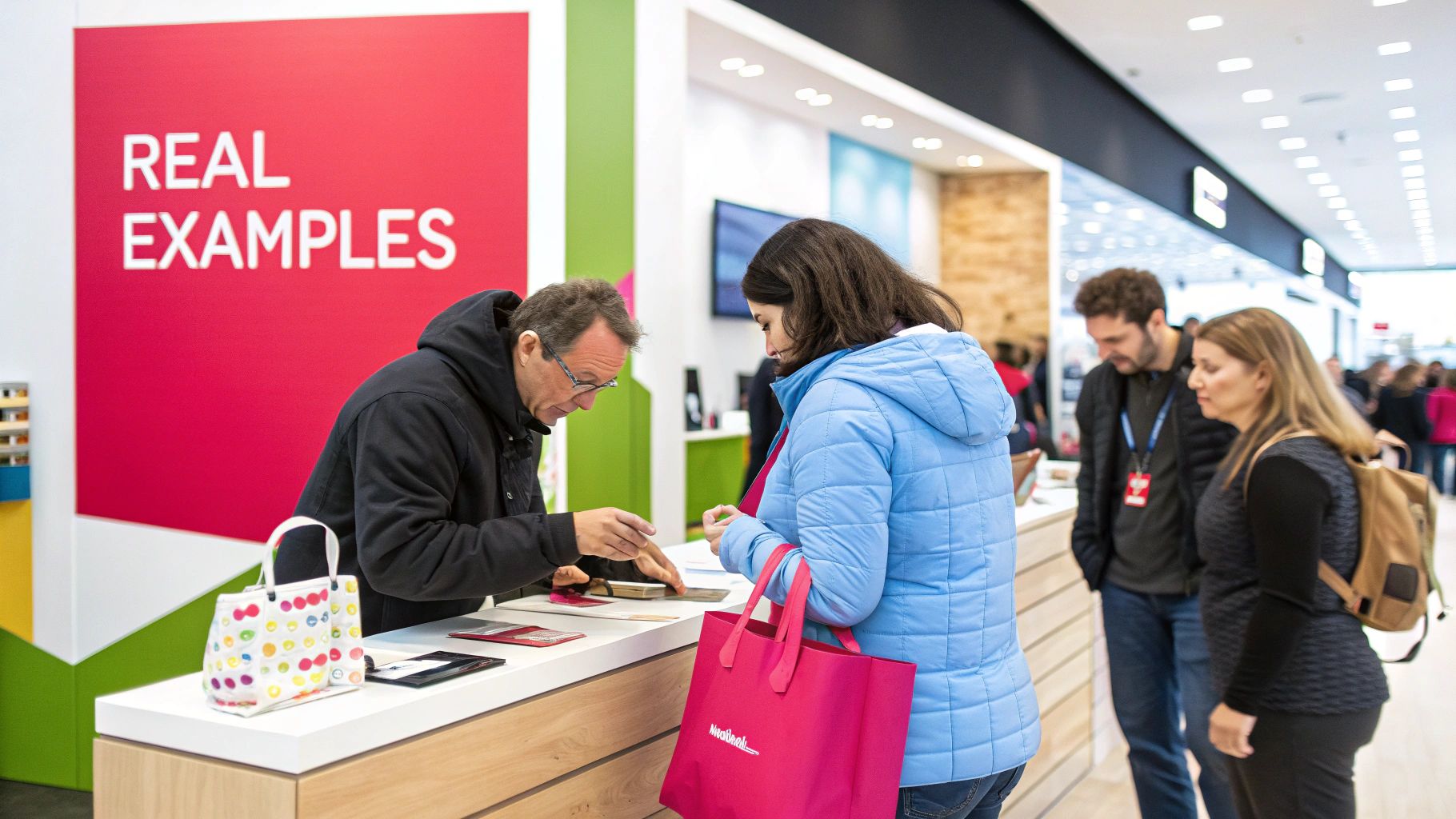
As you start wrapping your head around what brand storytelling can do for your business, it's natural for a few practical questions to pop up. Let's tackle some of the most common ones that brands ask when they're just getting started.
How Long Should a Brand Story Be?
There's no magic word count. The right length is all about the platform you're using and what you're trying to achieve. The key is simply to keep the story moving and hold your audience's attention.
- Social Media: On fast-paced platforms like Instagram or TikTok, you need to be quick and punchy. Aim for 150-250 words in a caption or a 30-60 second video.
- Blog Posts & Website: This is where you can stretch your legs. A deep-dive blog post can easily hit 1,200–2,000 words, but your main "About Us" page should probably stay more concise.
- Email Newsletters: People scan emails, so keep it brief. Around 200–300 words is the sweet spot for a focused story that gets them to click for more.
Can "Boring" Industries Use Storytelling?
Absolutely. In fact, they might need it the most. Every single business, no matter how technical or niche, has a human core. B2B storytelling is incredibly powerful when it stops talking about product specs and starts talking about customer wins.
Don’t just describe your software; tell the story of how it saved a project manager from another weekend of work.
A "boring" industry is just an opportunity to tell a surprisingly compelling story. Focus on the people you help, the problems you solve, and the mission that drives your team.
How Do You Measure Storytelling ROI?
Figuring out the return on your narrative requires looking beyond surface-level metrics. To get the real picture of your ROI, you need to track both the direct sales and the indirect brand-building effects.
- Direct Impact: Get comfortable with UTM parameters. Use them to track conversions that come directly from your story-driven content. Did that new case study actually lead to more demo requests? Now you'll know.
- Indirect Impact: Keep an eye on brand sentiment online, the quality of engagement (are people leaving thoughtful comments or just empty likes?), and video completion rates. Over the long haul, you can even compare the lifetime value of customers who engaged with your stories versus those who didn't.
Ready to tell your brand's story with content that truly connects? JoinBrands is the all-in-one platform that connects you with over 250,000 creators to produce authentic UGC and amplify your message across every channel. Find the perfect creators to bring your narrative to life.
